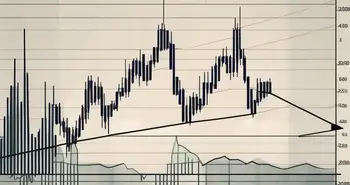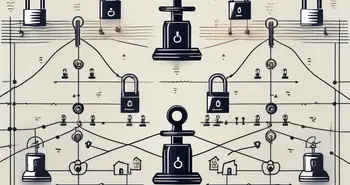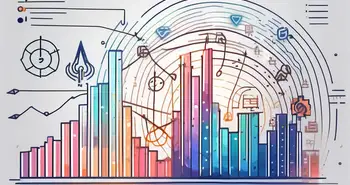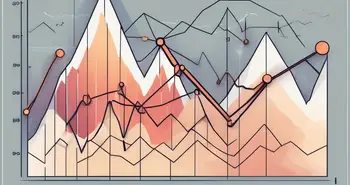The Spinning Top Candlestick: A Signal of Market Uncertainty

In the world of trading, clarity can be hard to come by, especially during times of market volatility. Traders rely on various tools to gain insights into market behavior, and candlestick patterns are one of the most trusted visual indicators. Among these, the spinning top candlestick pattern holds a significant position.
This article delves deep into the spinning top, revealing its significance, how to identify it, and how traders can leverage it to make informed decisions.
What is the Spinning Top Candlestick?
A spinning top candlestick is defined by a small real body centered between long upper and lower shadows. This formation resembles a child’s spinning toy, symbolizing a battle between buyers and sellers where neither side gains a clear advantage. The candlestick is formed when both bulls and bears push prices up and down during a session, but ultimately the closing price ends up close to the opening price.
The small body of the spinning top signifies indecision in the market, while the long shadows demonstrate volatility. Traders who understand these patterns can use them to spot potential reversals or trend pauses, making the spinning top an invaluable tool in technical analysis.
Key Takeaways
- Spinning tops indicate market indecision, where neither buyers nor sellers have dominant control.
- They often appear after extended price movements and may signal a potential reversal or consolidation.
- The real body is small, showing little difference between opening and closing prices, while the long shadows show the price fluctuations during the session.
- Traders often combine spinning tops with other technical indicators for confirmation.
- For a more extensive guide on other common candlestick patterns like the hammer, engulfing patterns, and doji, check out our candlestick pattern guide.
What Does a Spinning Top Tell You?
The spinning top candlestick pattern is a signal of indecision in the market. The long upper and lower shadows represent sharp price swings in both directions, yet the small body reflects a lack of momentum. This lack of decisive movement can be interpreted in several ways, depending on the context in which the spinning top appears.
A spinning top may signal that a prevailing trend—whether bullish or bearish—is losing steam. If a spinning top forms after a strong uptrend, it may be a signal that buying pressure is fading, leading to a bearish reversal. Similarly, if it appears after a downtrend, it could indicate that selling pressure is easing, hinting at a bullish reversal.
In some cases, especially when a spinning top appears within an established range, it may indicate continuing market indecision. This could suggest that the market is consolidating before making its next major move. In such situations, traders should wait for further confirmation before making any trade decisions.
Interpreting the Spinning Top in Market Trends
The location of a spinning top within a market trend is crucial to understanding its significance. A spinning top in isolation doesn’t provide much information, but its context relative to the trend does.
At the Top of an Uptrend: A spinning top may indicate that buying pressure is weakening. If the next candlestick is bearish, it confirms that a downtrend reversal is likely.
At the Bottom of a Downtrend: Conversely, a spinning top at the bottom of a downtrend suggests that sellers are losing control. A bullish candlestick following the spinning top would confirm a reversal to the upside.
Within a Range: When a spinning top forms in a sideways market, it indicates that the market remains uncertain. The following candle will often confirm that the sideways movement will continue.
Remember Confirmation is Key: Traders should never rely on a spinning top alone. Confirmation from subsequent candles is critical for interpreting the pattern accurately.
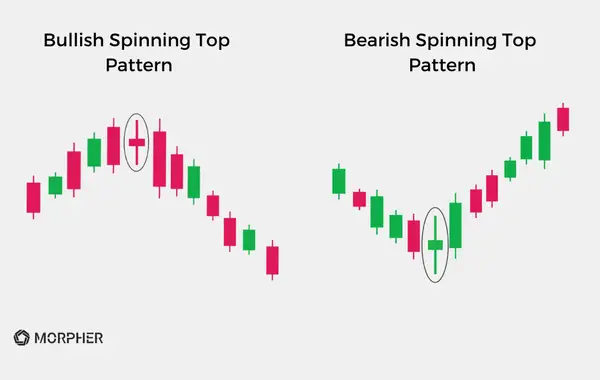
Bearish Confirmation: If a spinning top appears after an uptrend, and the next candle closes lower, this bearish confirmation suggests the trend may reverse.
Bullish Confirmation: If a spinning top appears after a downtrend, and the next candle closes higher, this signals a potential reversal to the upside.
Without confirmation from subsequent candles, the spinning top may merely reflect market indecision, and acting prematurely could result in poor trading decisions.
Combining Spinning Tops with Other Technical Indicators
While spinning tops can provide insight into market conditions, their true value is unlocked when combined with other technical indicators. Traders commonly use spinning tops alongside the Relative Strength Index (RSI), Moving Averages (MA), and Bollinger Bands to strengthen their analysis.
RSI: If the RSI is showing overbought conditions and a spinning top forms at the peak of a trend, this could reinforce the idea of a bearish reversal. Conversely, an oversold RSI with a spinning top at the bottom of a trend could indicate a bullish reversal.
Moving Averages: A spinning top that forms near key moving averages can signal that the price is struggling to break through those levels, suggesting potential support or resistance.
Bollinger Bands: When a spinning top forms near the outer bands, it can indicate potential reversal points, especially if other indicators confirm this analysis.
Example of a Spinning Top Candlestick in Action
Let’s take a look at a real-world scenario:
Imagine a strong bullish trend where the price has been climbing steadily over several days. As the price hits a new high, a spinning top forms, with long shadows and a small body. The next day, a large bearish candle follows, signaling that buyers are no longer in control and that a reversal may be underway. In this case, the spinning top acted as a warning of a potential trend reversal.
In contrast, another spinning top forms during a period of sideways price action. The next candle remains within the range, confirming that the market is still undecided, and the trend will likely continue in this range for a while.
These examples illustrate the importance of context and confirmation when using spinning tops in your trading strategy.
Limitations of Using the Spinning Top Candlestick
While spinning tops can be powerful indicators, they have limitations. Due to their frequent appearance, not every spinning top signals a meaningful market change. Without proper confirmation, a spinning top can lead to false signals and premature trades.
Another limitation is the size of the candle. A spinning top with long shadows can create a large high-to-low range, making it difficult to set stop-loss orders without taking on considerable risk. In such cases, traders must carefully assess the risk-to-reward ratio and consider using other candlestick patterns or indicators to guide their decision-making.
The Difference Between a Spinning Top and a Doji
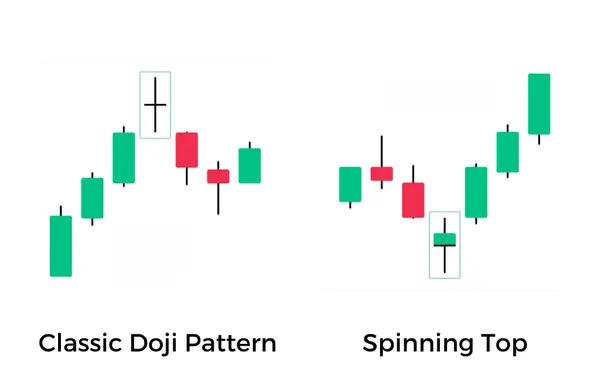
Both spinning tops and doji patterns represent market indecision, but there is a notable difference in their structure. While both have small real bodies, a doji typically has little to no real body, indicating that the open and close prices are identical. Spinning tops, on the other hand, have small real bodies but long upper and lower shadows. Both patterns are important in identifying potential market reversals or periods of consolidation.
Trade with Precision on Morpher’s Advanced Charts
Mastering candlestick patterns like the spinning top can significantly improve your trading strategies by providing insights into market trends and potential reversals. To take your trading to the next level, it’s crucial to have access to reliable, real-time data and advanced charting tools.
At Morpher, we offer zero-fee trading and advanced charting features that allow you to analyze candlestick patterns with ease. Whether you're tracking spinning tops, doji, or any other formation, our platform gives you all the tools you need to make informed decisions, from technical indicators to customizable charts.
Start trading on Morpher today and explore the power of up to 10x leverage, infinite liquidity, and cutting-edge charting tools to navigate volatile markets with confidence.
Sign up now and unlock your full trading potential with Morpher’s advanced charts.

Disclaimer: All investments involve risk, and the past performance of a security, industry, sector, market, financial product, trading strategy, or individual’s trading does not guarantee future results or returns. Investors are fully responsible for any investment decisions they make. Such decisions should be based solely on an evaluation of their financial circumstances, investment objectives, risk tolerance, and liquidity needs. This post does not constitute investment advice.

Painless trading for everyone
Hundreds of markets all in one place - Apple, Bitcoin, Gold, Watches, NFTs, Sneakers and so much more.

Painless trading for everyone
Hundreds of markets all in one place - Apple, Bitcoin, Gold, Watches, NFTs, Sneakers and so much more.






